Reviews
Stanley Kubrick
USA, 1953
Credits
Review by Cullen Gallagher
Posted on 02 March 2010
Source YouTube
External links
Fear and Desire in eight parts on YouTube
Categories Kubrick
Fear and Desire is Stanley Kubrick’s celluloid skeleton in the closet. Though it was his first feature, he later publicly disowned and maligned it. Embarrassed by what he referred to as its amateurish qualities, he even personally tried to have any existing prints destroyed. Thanks to the archives at the George Eastman House, prints of the film do exist, but due to legal complications and print scarcity, the film rarely shows. This leaves eager viewers only two options: be patient, or seek out bootlegs. While watching the crucial first step into the world of feature filmmaking for the director is like demystifying a piece of cinema mythology, it is neither a lost masterpiece nor an easily dismissed blunder. Instead, it is what we have come to expect from Kubrick all along: a skillful, atmospheric, and visually expressive drama, one that wears youthful ambition on its sleeve and promises much for the future. Looking back on the film now, over half a century since it was made, we know that Kubrick followed through on all of the film’s promises.
The script (written by Kubrick’s childhood friend Howard Sackler) is set in a nameless, fictional country in the midst of a vague, undefined war. Four soldiers have crash-landed behind enemy lines and must figure out a way to escape back to their base on the other side of the river. Lieutenant Corby is focused on making a raft and making their way down the river by nightfall; Sergeant Mac is intent on ambushing the local enemy camp, killing their general, and stealing their airplane; Private Sidney pivots precariously on the brink of a mental breakdown; and Private Fletcher is eager to escape. Kubrick compliments the streamlined narrative with location photography shot in the San Gabriel Mountains (located in the northern part of Los Angeles County). The soldiers’ intense moral anxiety (from Corby’s apathy to Mac’s compulsion towards violence) plays out against the deceptive tranquility of nature. As much as the forest and rivers hide them from the enemy (and prevent them from easily returning to their own base), they also strip bare the protagonists’ emotions and leave them as vulnerable to their own desires as to the enemy’s hands.
Whereas Kubrick’s earliest documentaries benefited largely from his experience as a still photographer for Look magazine, Fear and Desire demonstrates for the first time Kubrick’s skill as an editor. The influence of Vsevolod Pudovkin’s Film Technique and other Soviet montage theorists is readily apparent in the film, particularly the expert (if heavy-handed) initial enemy raid sequence. As the four unarmed soldiers surprise and kill two enemy soldiers at dinner, Kubrick creates violence through editing. Extreme close-ups of fists aimed at the camera are swiftly juxtaposed with desperate hands with nothing but soiled, stale bread to squeeze until life leaves their bodies. The enemy’s spilt stew, dark and oozing, spreads like pools of blood across the floor. Having the quartet literally consume the enemy’s “stew” might make the “bloodthirsty” metaphor too literal (something which Soviet avant-garde directors could also be accused of, particularly Sergei Eisenstein), but none of this detracts from the stark amorality and brutality of the scene or its vicious display of cinematic technique.
Elsewhere, Kubrick’s burgeoning and maturing capabilities as a director seem to come to full fruition for brief, but potent images that one is not soon to forget. Paul Mazursky is impressive in his debut role as actor as Private Sidney: during his mental breakdown he performs a one-man version of Shakespeare’s The Tempest in front of a girl they have captured and tied to a tree, as evocative a portrait of psychological anguish as you’ll find in any of Kubrick’s later works. And the film’s final image of Mac and Sidney floating down river through a thick, gray fog is as indelible as it is ephemeral—a metaphor signaling both death and eternity, an end to the characters’ story and the endlessness to their questions which remain, and will remain, unanswered.
That Fear and Desire holds up so well (despite Sackler’s overly literary script and Kubrick’s occasional indulgence in easy symbolism) makes Kubrick’s dismissal of the film all the more frustrating. His suppression of it, in fact, is actually more of a detriment to his own body of work than a protection of his legacy. The bootlegs that are circulating make his cinematography look far worse than it should (judging by reviews of the film seen in rare 35mm repertory revivals). The DVD I found was unwatchable, a who-knows-what-generation, washed out copy whose monochromatic photography was an assault of blinding whites and murky blacks. Ultimately, I had to resort to the Italian-subtitled copy on YouTube, whose images are at least partly discernable through the blurry levels of pixelization and compression. One can hardly recognize the “careful (and exquisitely) lit compositions” that Dave Kehr has referred to in his New York Daily News review at the time of the film’s release in New York City in 1994. Judging by the photographic excellence and professionalism of Kubrick’s three previous documentaries (Day of the Fight, Flying Padre, and The Seafarers), as well as his subsequent feature (Killer’s Kiss), I can only hypothesize about all the details that we are missing out on in the currently circulating copies. For now, viewers will have to make due with the only options available: to experience the film in compromised, not-so-ideal circumstances, or to continue waiting patiently for the Kubrick estate to change its policies and condone a proper release.
More Kubrick
-
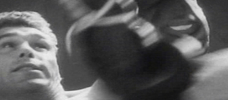
Stanley Kubrick’s Early Documentaries
1951-53 -
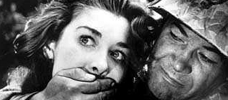
Fear and Desire
1953 -
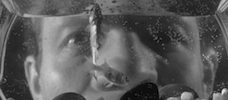
Killer’s Kiss
1955 -
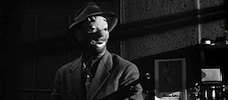
The Killing
1956 -
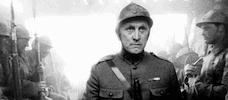
Paths of Glory
1957 -
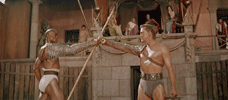
Spartacus
1960 -

Lolita
1962 -
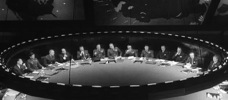
Dr. Strangelove or: How I Learned to Stop Worrying and Love the Bomb
1964 -

2001: A Space Odyssey
1968 -

A Clockwork Orange
1971 -
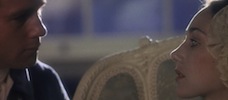
Barry Lyndon
1975 -
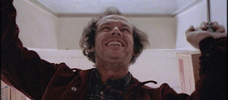
The Shining
1980 -
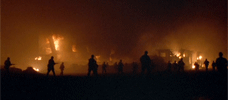
Full Metal Jacket
1987 -
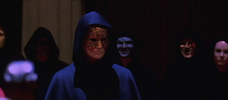
Eyes Wide Shut
1999 -

A.I.
2001
We don’t do comments anymore, but you may contact us here or find us on Twitter or Facebook.



